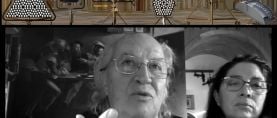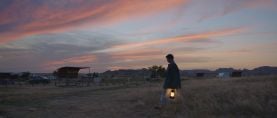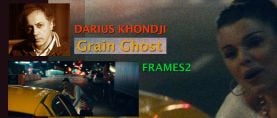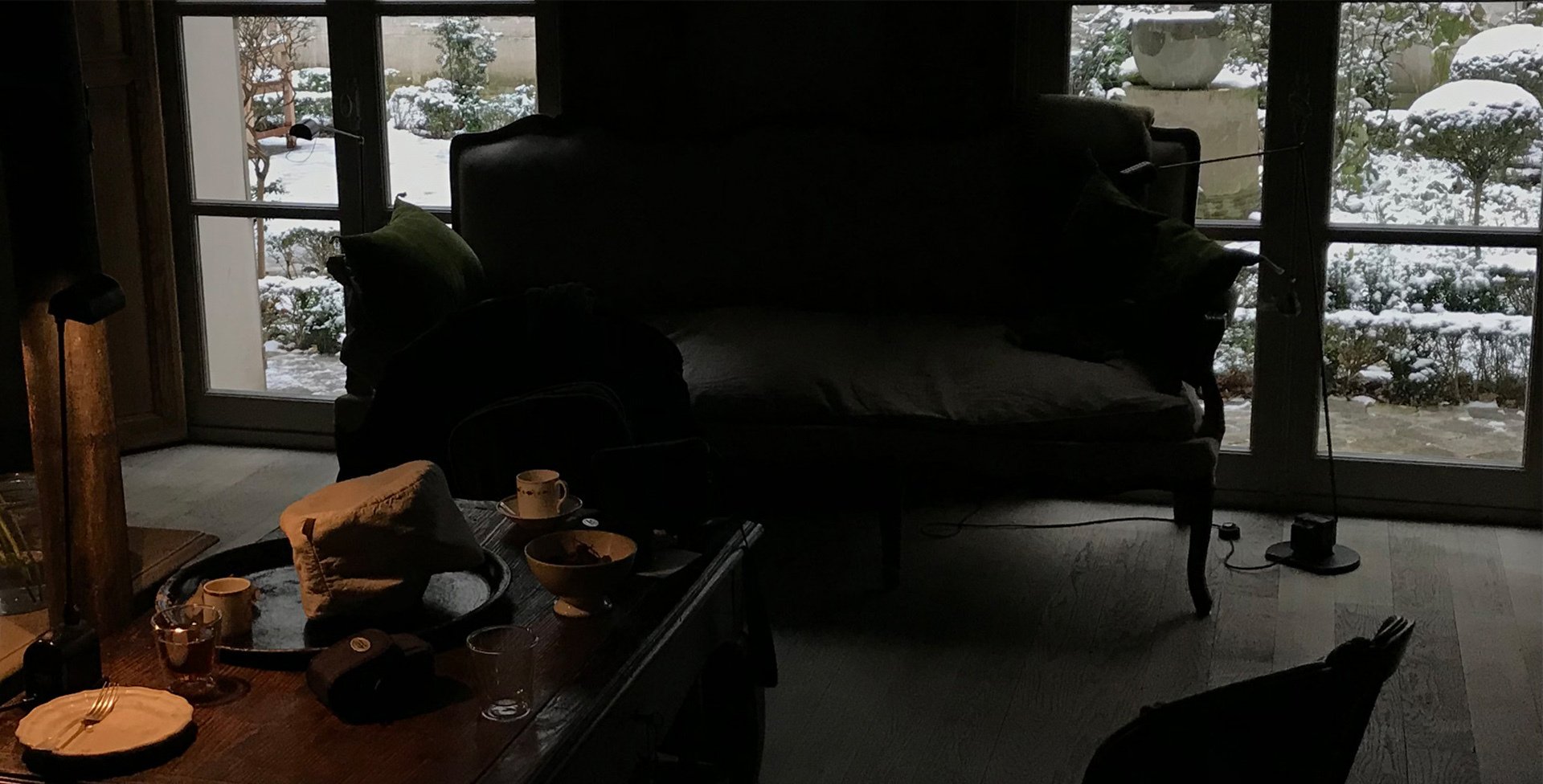
Visit with Darius Khondji, ASC, AFC - 1. Book, Dimming, Colors, Direction
A wide-ranging discussion with master cinematographer Darius Khondji ASC, AFC - part 1 of 2
When I visit Darius Khondji, ASC, AFC, in his home in Paris recently for coffee, tea and talk about his art and craft, we speak in his dark living room, with a small pool of light from a lamp on a nearby table, and soft daylight coming through French windows that give on to a snowy courtyard.
Darius’ wife, photographer Marianne Chemetov, kindly agrees to shoot a still of her husband for me near a window. They discuss the lighting. Darius asks to be in silhouette, and, afterwards he darkens Marianne's photo on his iPhone even further. I ask him about this, and he says: “I like the radical quality of this chiaroscuro.”
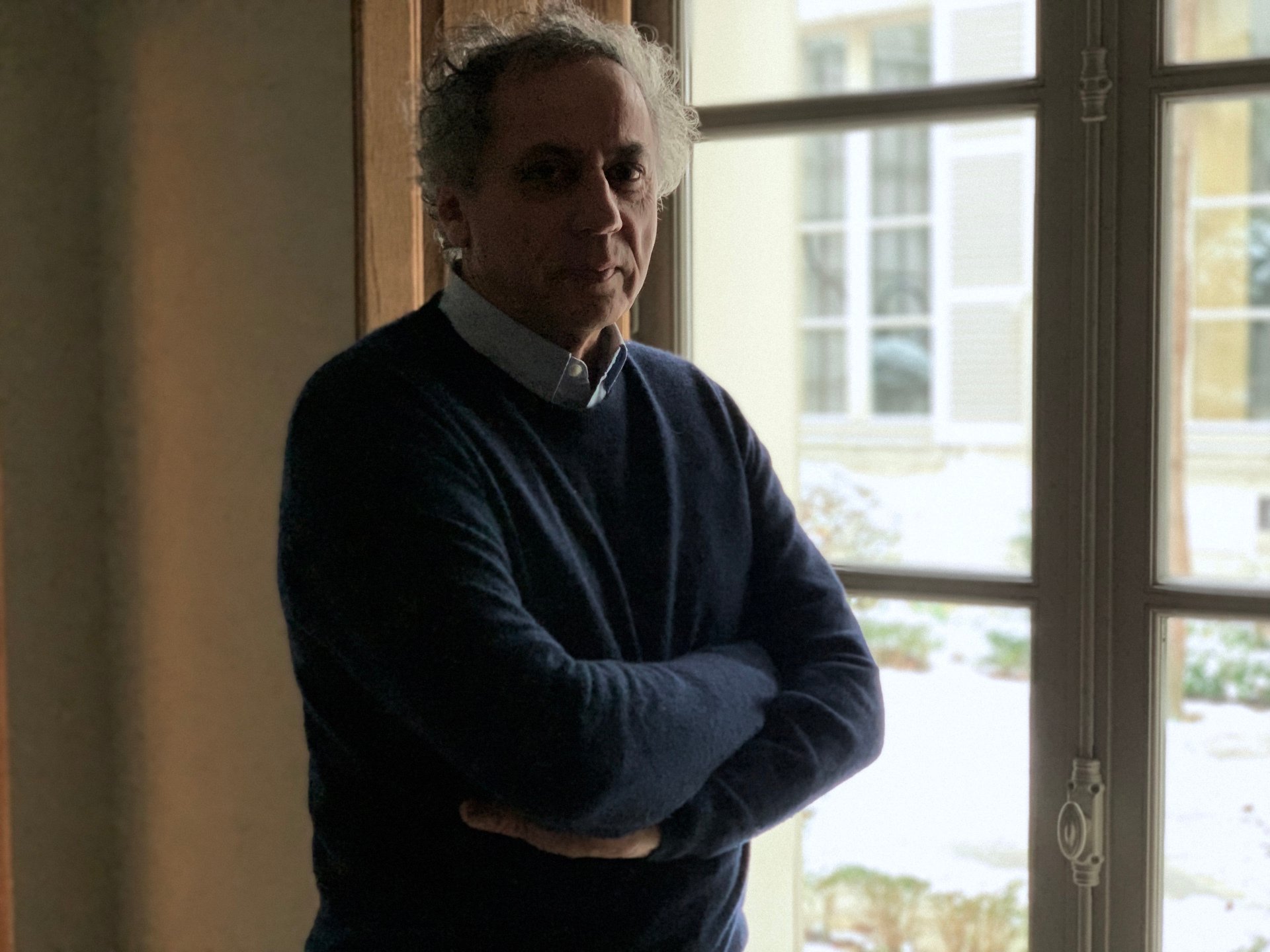
+++
PART 1
- The Book
- Teenage Dimming
- Gold and Green
- Placing the Source
Part 2
- Big Sources
- Exposure
- Contradiction
- Directors
+++
1.The Book
Darius Khondji is an old friend, and a master cinematographer whose credits include Delicatessen, City of Lost Children, Seven, Stealing Beauty, Evita, Alien: Resurrection, The Beach, Chéri, Midnight in Paris, Amour, The Immigrant, Okja and Lost City of Z.
Darius has worked with an impressive number of top directors including: Woody Allen, Danny Boyle, Stephen Frears, James Gray, Michael Haneke, Jean-Pierre Jeunet, Bong Joon-ho, Neil Jordan, Wong Kar-wai, Roman Polanski and Sydney Pollack. Darius recently wrapped Uncut Gems directed by the Safdie brothers.
Journalist Jordan Mintzer has come out with a bi-lingual French-English book about the cinematographer, entitled Conversations with Darius Khondji. The book gathers Jordan's talks with Darius and also brief interviews with some of his key collaborators, with a wealth of wonderful illustrations. Naturally, I bought the book and asked Darius to sign it for me.
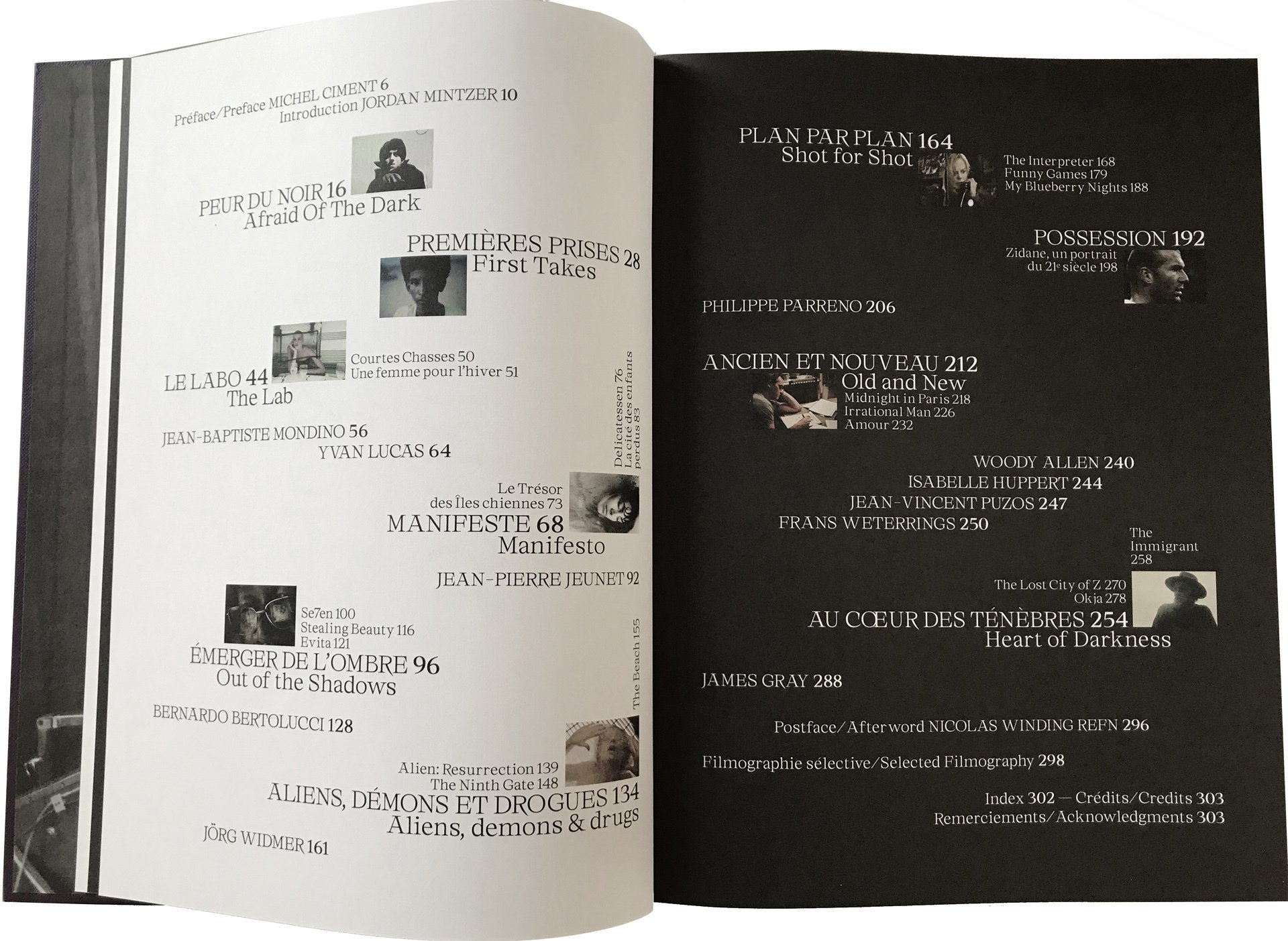
Darius and Jordan presented a Master Class at the Image Forum in Paris to promote the book. I attended and was intrigued by Darius' dialogue with young filmmakers.
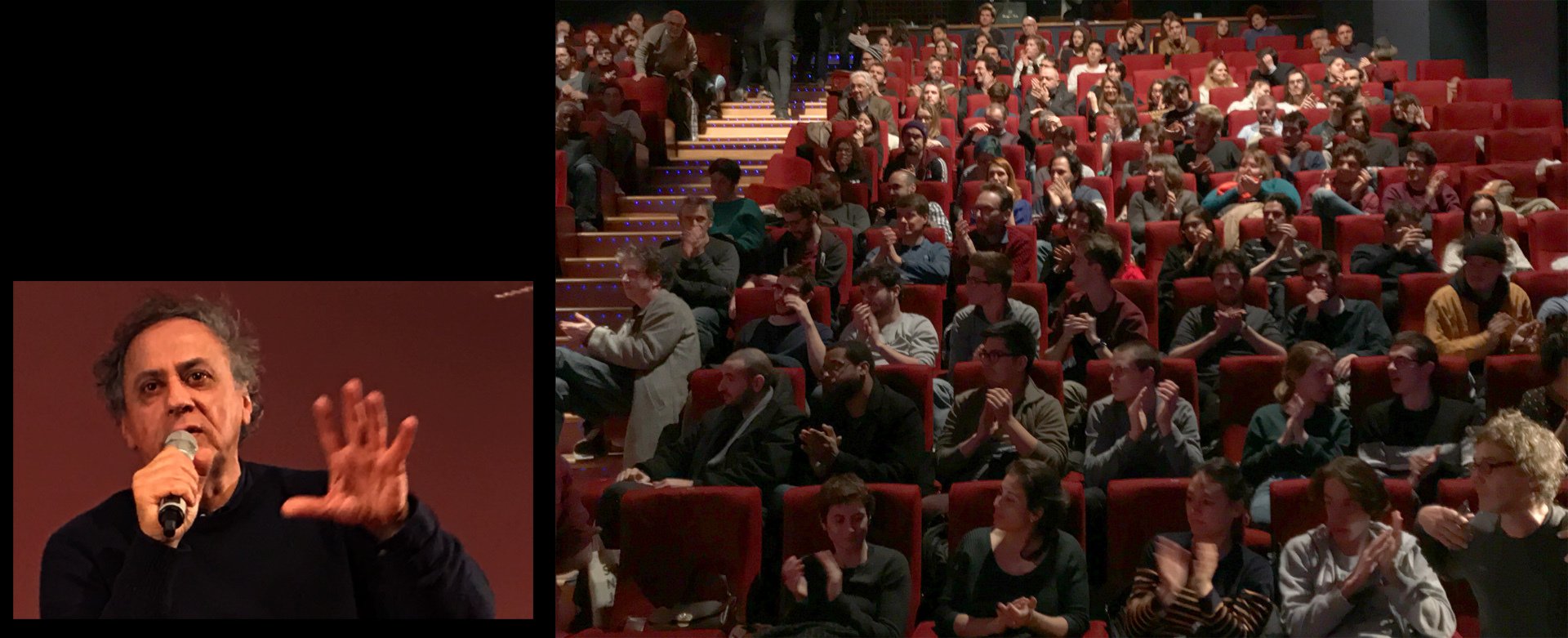
When I visit Darius a week later, I ask him to follow up on a few of the themes evoked, including some practical talk about lighting. We speak mostly in French, dropping in English phrases from time to time.
+++
2.Teenage Dimming
Benjamin B: In the book you mention that, when you were a teenager, you had a very big Chinese lantern in your room on a dimmer.
Darius Khondji: It was almost 2 meters wide... It invaded the room. We were living in the Parisian suburb of Vaucresson. My room was all white, I had a big mattress on the floor, and a turntable to listen to music records.
BB: What did you listen to?
DK: Mostly classical music -- Bach, and Italian operas by Verdi: Rigoletto, Il Trovatore and La Traviata. Later I preferred Puccini, because it seemed more cinematic to me.
BB: And you dimmed down the Chinese lantern?
DK: That was one my first experiences with a desire to put myself in different ambiances. I would vary the dimmer and bring the bulb very low, down to a very beautiful amber. The entire room was darkened. And the light outside was very blue.
BB: Was it a 100-watt bulb?
DK: It must have been bigger. I never put it higher than 50%, because the bulb was too strong, and the room became too bright. I liked the room to be a little dark. I brought the light further down when I had friends over.
BB: What kind of teenager were you?
DK: I was very atypical. I had very long hair, so I looked like a hippie, but I didn’t smoke joints or listen to the Pink Floyd. I was a total karate fan. I began doing karate at 11 or 12, the same age I started shooting 8mm films.
BB: I imagine you turning the dimmer all the way down, to where it’s almost off, just enough to get a little buzzing glow.
DK: We’re all like that with dimmers! (laughter)
BB: Looking at your movies I imagine that certain colors have become your friends. And I see this amber as your first encounter with a friendly color.
DK: That’s exactly right. And the first thing I sought to reproduce was the amber of the end of the day, and the warm color of house lamps. It was even a little difficult for me to get away from that color.
+++

3. Gold and Green
BB: And then you meet up with the color again, and like a friend it grows, so the amber becomes gold.
DK: That’s very true. This is an interesting discussion. When I did Delicatessen with Jean-Pierre Jeunet and Caro, they were very attached to this golden color. And when I met James Gray, the same thing.
BB: And Yvan Lucas, your first colorist and early collaborator, helped you obtain this gold color. He’s also interviewed in the book.
DK: Yvan and I grew up together; he was my intermediary to color. Creating gold involved a kind of alchemy. We were working with photochemical, and gold was very difficult to reproduce on film, in a transparent medium. It was difficult to find the right dosage of red and green. For a long time I thought it was about adding red, then I understood that you have to add green.
BB: For me, green is your second friend.
DK: Yes, exactly. I love green, and it's in City of Lost Children... Green first appears in the early 1980s, in commercials I lit directed by Jean-Baptiste Mondino. I started putting green in the image with the top light. I was using bay lights above, like Gordon Willis. I would put 1/8 or 1/4 green gels with tracing paper on tungsten lights at 3200 or 3400 K, and I would add a little bit of blue which I would put at a very low level.
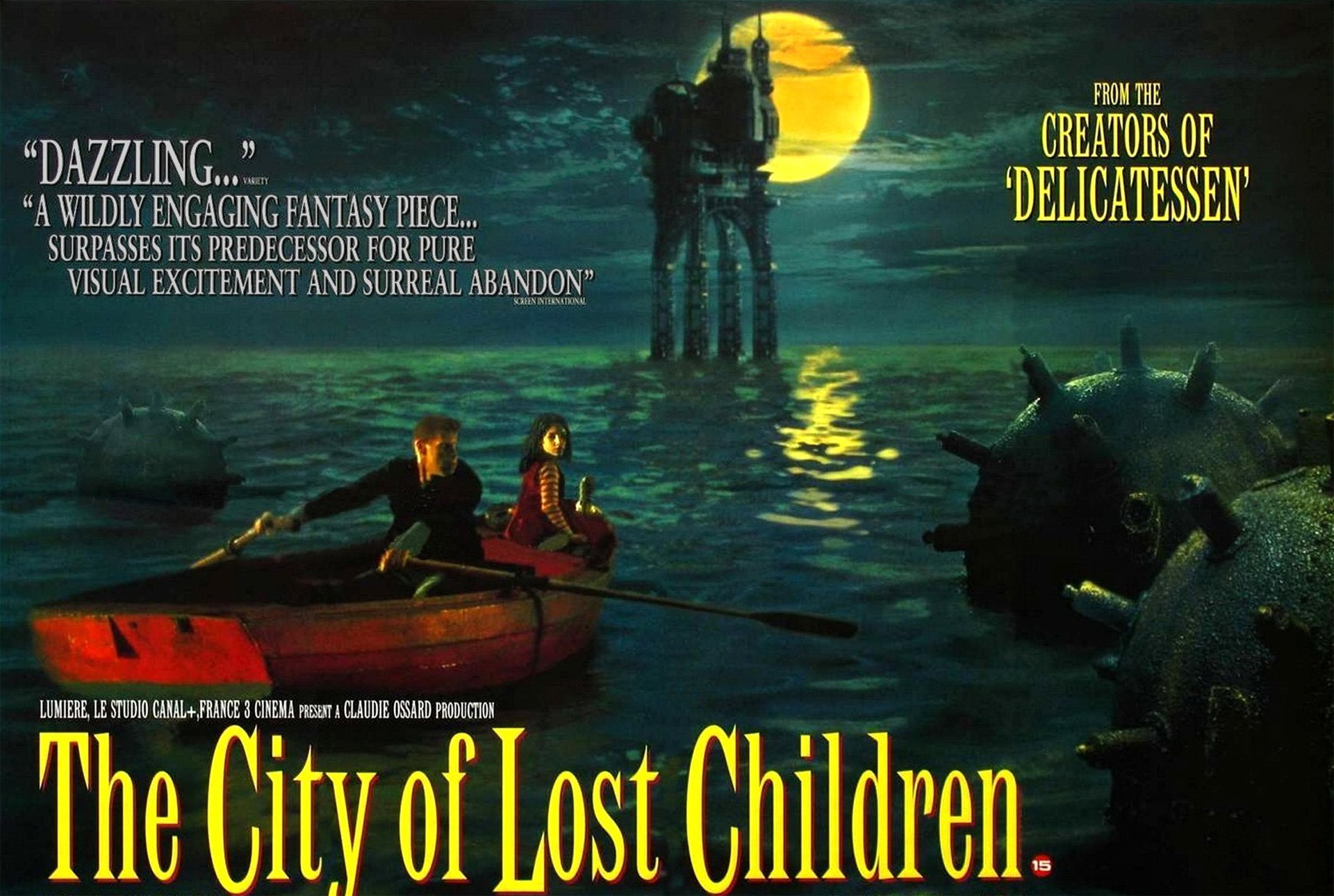
BB: We have a little bit of blue top light in this room.
DK: In this room, there’s some tungsten bounce from the table and a little bit from outside. In the past, I wouldn’t have worked with this kind of light because it’s twisted. It’s more like a painter’s light.
BB: You’ve done that on some films; you would put the top light at minus 2, or 2 ½ stops.
DK: Here, it’s the snow outside reflecting off the ceiling. But it’s at a very low level, you can’t read it. Only digital sensors could get this.
BB: It would read E on my meter, E for "Error". I love the E letter you get when there’s not enough light. (laughter)
DK: That’s very funny. The E letter used to be hell for me, but now it’s my friend. E means: "Use your eyes man!".
On Seven I started having the E letter all the time. And we would laugh about it with David Fincher. And he would say: "You don’t need the meter anymore".
BB: With the young filmmakers the other night, you spoke of trusting your eye.
DK: Yes. When I started, I didn’t know how to light because I didn’t trust my eye. I was terrible at lighting at the beginning. I didn’t know how to use light sources. I would use two sources to light a face. I thought that was the way it was supposed to be done. I had no idea, I was just guided by technique.
Then little by little I got better. Actually it’s really a matter of trusting your judgment, trusting your eye and not letting yourself be impressed by anything else, or by what people tell you, be they positive or negative. Only follow your heart and your eye, and put them together. That’s the only thing that counts. And it can take a long time, it took me a long time to learn that.
+++
4. Placing the Source
BB: You often start a scene with the direction of the light.
DK: Light direction is the most important thing for me: the way it comes to us, and especially the height of the source.
I often use oblique light that goes from the top corner of a room to the bottom corner on the opposite side.
BB: That makes me think of the 45-degree angle that you see in a lot of Edward Hopper's work.
DK: You’re right, his light is usually at 45 degrees, although sometimes it’s even lower. But I think many painters do that, Caravaggio also.
Hopper’s paintings were my first influence for lighting. I discovered him when I was a film student at NYU. At the time I was influenced directly by paintings. Nowadays I don’t want to reference painting directly.
BB: How do you decide where to place the main source?
DK: There is only one place where the source should be in a scene.
BB: Only one?
DK: For me, there is only one position. But of course, each person has their own. My source is often from above, but there are no rules. You can do entire scenes with a source from the ground, with a bounce from below.
I almost never tell my gaffers which fixtures to use, unless I hear something very wrong, like a source that is too big for what I need, or more rarely, something too small. But that’s very rare with gaffers.
I’m very specific and directive about the light direction and height with my gaffers, but I like them to use the fixtures they want to use, as long as the result is the same. The important thing is the kind of light it is, be it indirect, or a little directional, or through a diffusion. The height is very, very important, as is the direction of the light.
BB: How do you find the one spot for the source?
DK: I put myself where the main action takes place, even if there is movement, then I go to where I think the source should be, and I draw an imaginary line between the action and the source. And for me, it’s very specific.
The left-right direction is important too, because that can make the lighting a little backlit, or more of a sidelight or front light. It can determine if the light penetrates the eyes -- if the eyes are revealed or not -- especially since I tend to like the light to come from very high up, even if it comes from the side. So I’m always asking for very high stands.
BB: Crank-O-Vators?
DK: Yes, but also stands with special extensions. In fact I realize that I’m pretty specific. One has false images about oneself.
BB: “I’m a carefree, mellow guy”
DK: And in reality I’m a control freak! (laughter)
But gaffers have said nice things to me; they've told me that I give them a lot of responsibility.
But again I try to give the illusion of accidental lighting, not random lighting but truthful lighting. Even if I do stylized lighting, even if I’m on a sound stage, I want it to look real, I want there to be a certain truthfulness to the height of the source.
+++
In PART 2, Darius will discuss big sources, exposure, contradictions and directors, among other things...
+++
LINKS
thefilmbook: Visit with Darius Khondji, ASC, AFC - 1. Book, Dimming, Colors, Direction
thefilmbook: Visit with Darius Khondji, ASC, AFC - 2. Sources, Exposure, Contradictions, Directors
+++
+++
synecdoche.fr: Conversations with Darius Khondji by Jordan Mintzer
YouTube: Master Class de Darius Khondji animée par Jordan Mintzer (in French)
+++
wikipedia.org: Darius Khondji
imdb.com:Yvan Lucas
wikipedia.org: Jean-Baptiste Mondino
wikipedia.org: Jean-Pierre Jeunet
msegrip.com: Crank-O-Vator III
ascmag.com: Book Excerpt - Conversations with Darius Khondji by Jordan Mintzer
ascmag.com: Flashback - Seven by Dave Williams
+++
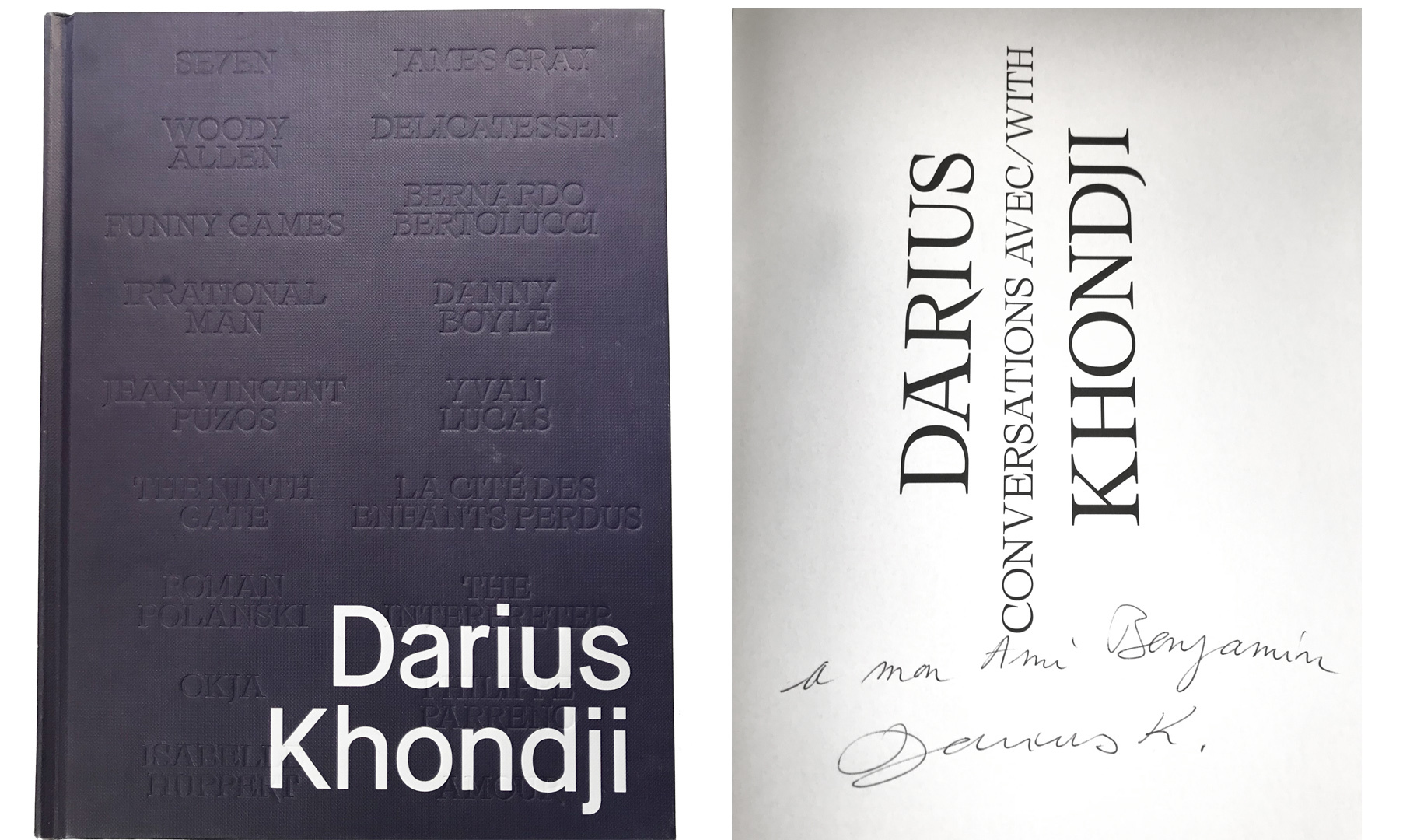
+++

